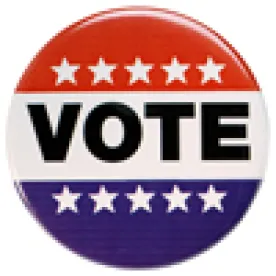As has been true for so many issues arising from the COVID-19 pandemic, growing concerns about safely voting in the 2020 elections are beginning to permeate the workplace, prompting employers nationwide to create or revise policies to address employee apprehensions about voting amidst a pandemic. Time to Vote, a self-described “business-led, nonpartisan coalition that aims to increase voter participation in the U.S. elections,” founded by numerous major companies, reports that, as of August 27, 2020, more than 700 companies, representing about two million workers, have pledged to grant their employees unpaid or paid time off (“PTO”) to vote on Election Day and to promote initiatives such as early voting and vote-by-mail. In addition, some employers are also providing time off for employees to engage in election-related activities, such as serving as poll workers (in response to the anticipated shortage of such workers due to the pandemic).
Moreover, many states already have laws requiring employers to provide employees with paid or unpaid time off to vote. Accordingly, with the election less than two months away, employers may want to ensure that they have voting leave policies in place that are both legally compliant and responsive to employees’ pandemic-related voting concerns.
A Sampling of New Voting and Voter Engagement Leave Policies
Several major retailers and technology companies reportedly have made Election Day a paid holiday. Others, including two big U.S. apparel companies, reportedly are encouraging employees to vote by providing a designated number of PTO hours to vote on Election Day. One of those apparel companies is also offering employees PTO to train to be poll worker. Similarly, U.S. employees of a global clothing retailer who serve as poll workers will receive pay for eight hours, in addition to the compensation they may receive for such work under their local employment laws. Augmenting its PTO for Election Day, a large beverage corporation’s voting initiative includes supplying employees with state-by-state voting guides with voting procedures and deadlines, and creating volunteer opportunities to develop and distribute voter education resources.
State Voting Leave Laws
In deciding whether to create or revise a voting leave policy, an employer should first determine whether it has any legal obligations to provide employees paid or unpaid time off to vote or to allow them to engage in other election-related activities.
Overview of State Voting Leave Laws
Although Election Day remains off the National Holiday list, some states recognize Election Day as a state holiday (e.g., Illinois, Indiana, Maryland, Montana, and Virginia).
Nearly half the states have laws entitling employees to some amount of time off to vote. Some states specify the amount of time off that must be provided (e.g., two hours), while others refer to an unspecified “sufficient” or “reasonable” time. In some instances, the time-off requirement may be conditioned on the employee (i) having insufficient time either before or after work to vote while the polls are open, and/or (ii) providing the employer with notice of the need for the leave. Several states mandate paid time off for voting. Most voting leave laws prohibit employers from discriminating or retaliating against an employee who requests or takes time off to vote, and a few, including California and New York, require employers to post notices about employees’ rights and obligations with respect to voting leave. Finally, some states (e.g., Oklahoma) allow employers to require proof that the employee actually used his or her voting leave to vote.
Examples of State Voting Leave Laws
The following examples of state voting leave laws illustrate the various requirements employers may need to meet, depending on where they operate.
-
California: Employees who do not have sufficient time outside of their working hours to vote in a statewide election are entitled to enough time off during working hours to vote on Election Day, but need only be paid for two hours of voting leave. Employees must give their employer two days’ notice of their need for leave and must take leave at the beginning or end of their regular working shift, “whichever allows the most free time for voting and the least time off from the regular working shift,” unless the employer and employee agree to a different arrangement.
-
Illinois: Employees who give their employers at least one day’s notice of their need for voting leave must be allowed two paid hours off to vote, if the employees’ working hours begin less than two hours after the opening of the polls and end less than two hours before the closing of the polls. The employer may decide when an employee may take the time off.
-
Massachusetts: Employers must provide employees in certain industries (i.e., manufacturing, mechanical, and mercantile establishments) with unpaid time off during the first two hours that polls open, provided that the employee has requested the time off in advance.
-
New York: Employers must provide up to two hours paid voting leave to employees who do not have four consecutive hours between the opening of the polls and the beginning of their work shift, or between the end of their work shift and the polls closing. To be entitled to voting leave, an employee must request it at least two days in advance. The employer may dictate whether the time off will be at the beginning or end of the employee’s shift.
-
Texas: Employees who have fewer than two consecutive hours to vote outside of their normal working hours are entitled to take time off to vote. Although the law does not specify the amount of time that must be provided, state guidance recommends at least two hours.
Connecticut, New Jersey, Oregon, Pennsylvania, Virginia, and Washington are among the more than 20 states that do not require employers to provide voting leave, although New Jersey and Washington prohibit employers from influencing or intimidating employees to vote for or against a particular candidate and impose a criminal penalty for a violation of the law.
Additionally, some states require employers to allow an employee time off to serve as an election official on Election Day. For example, employers in Ohio, in addition to providing employees time off to vote, must also permit time off to serve as an election official.
State Procedural Voting Laws
Employers also should be familiar with their state’s procedural voting laws so that they can more effectively create or revise voting leave policies and develop informational resources for their employees. For instance, all states allow some form of absentee voting, although about one-third of the states require the voter to provide an excuse for doing so. According to the National Conference of State Legislatures, “[f]ive states currently conduct all elections entirely by mail: Colorado, Hawaii, Oregon, Utah, and Washington. Three states—California, Nebraska, and North Dakota allow counties to determine if an election will be held entirely by mail, with many but not all counties choosing to do so.” Employers do not need to provide time off for voting if an employee has voted by mail, and they may wish to include a requirement in their policies for employees to provide proof of having voted (e.g., a “selfie” at a polling location). Employers may also want to take into account providing leave for early, in-person voting, which is currently allowed in 40 states and the District of Columbia.
All employers, but particularly multistate employers, may wish to consult a single website, such as vote.org, that provides the specific voting rules for all 50 states, including recent changes to some absentee voting laws made in response to the COVID-19 pandemic. Multistate employers may determine that it is not possible or practical to create a one-size-fits-all voting leave policy because of the significant variations in voting laws from state to state. For this reason, multistate employers like, for instance, a well-known footwear company, are developing voting leave and other election-related policies “tailored to provide adequate time to vote based on each state’s voting laws and requirements. This may include PTO on Election Day, making Election Day a day without meetings or providing resources for mail-in ballots and early voting.”
Some Pandemic-Related Considerations
Whether an employer is creating its first voting leave policy or revising an existing one, it may wish to consider establishing some (hopefully) one-time rules addressing employees’ concerns about voting during the ongoing COVID-19 crisis, such as expanding Election Day leave to cover early, in-person voting, or granting additional time off for employees who volunteer to be poll workers. In addition, since many employers still have a workforce that is mostly or partially working remotely, they should craft their policies to take telework into consideration as well.




 />i
/>i


